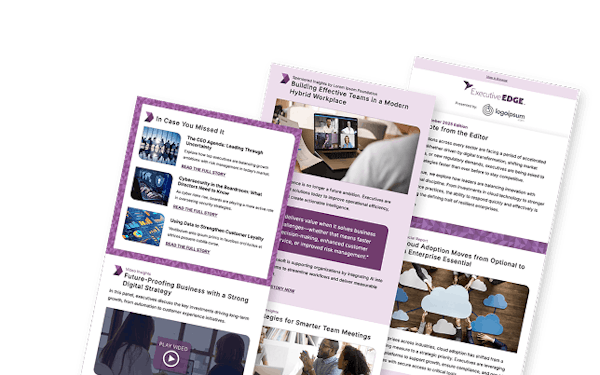Document Security Isn’t Optional — It’s the Backbone of Data Protection
Key Highlights
- Document security must span lifecycle phases: creation, storage, sharing, disposal.
- Five pillars anchor effective defense: access control, classification, encryption, monitoring, training.
- Legal and regulatory obligations make document security essential in finance, healthcare, and government.
- Human error frequently drives breaches, making consistent training non-negotiable.
Data leaks and compliance fines continue dominate headlines, and the humble document remains a critical vulnerability. Whether digital or physical, documents such as emails, contracts, technical sheets, and HR files, carry sensitive information that runs through multiple access points and human hands.
A strong document security framework places guardrails at each stage: who sees what, how it's protected, how misuse is flagged, and how the human layer is trained and reinforced. This is not simply an IT discipline but a business imperative, especially in regulated sectors where legal consequences and reputational damage escalate rapidly.
Below is an excerpt that captures the urgency of document security and outlines the foundational pillars that executives should demand in any robust framework.
As reported by Scott Francis in “Why Establishing a Document Security Framework Is Essential to Safeguarding Data” on SecurityInfoWatch:
“Establishing a document security framework is one of the most critical elements for ensuring a comprehensive organizational security strategy that will protect and safeguard vital enterprise information from its origin and storage to access, sharing and ultimately its disposal. Only authorized users can access documents protected by this security framework, thereby maintaining the integrity and preserving the confidentiality of these sensitive documents in medium to large organizations and highly regulated sectors. Document security frameworks facilitate the efficient and secure management, organization, and control of documents across various departments and platforms.
Security frameworks also provide a structured approach to managing and securing digital documents, thereby protecting confidentiality, integrity, and availability. However, document security isn’t just a cybersecurity strategy. Depending on the industry, these frameworks may also be a legal requirement. Government agencies, healthcare organizations, financial institutions, and law firms must comply with various regulations and laws regarding personal data. Two good examples are the Health Insurance Portability and Accountability Act (HIPAA) in the U.S. and the EU’s General Data Protection Regulation (GDPR).”
Continue reading “Why Establishing a Document Security Framework Is Essential to Safeguarding Data” by Scott Francis on SecurityInfoWatch.
Why It Matters to You
For executive leadership, documents are the supply lines of corporate intelligence. A breach through mismanaged contracts or leaked design files can cascade into legal, financial, and reputational damage. A document security framework ensures that these lines are reinforced, from permissions and encryption to audit trails and human awareness.
In regulated or high-stakes industries (energy, healthcare, defense, financial services), failure in document security can trigger fines, audits, and ruined trust. The framework described is your board-level insurance: codified, defensible, and consistent across departments.
Next Steps
- CEO/CISO: Mandate a top-down document security policy aligned to compliance (e.g., HIPAA, GDPR) with executive oversight.
- IT/Security: Design a classification taxonomy (public, internal, confidential, restricted) and deploy access control and encryption accordingly.
- Operations/Business Units: Integrate document handling rules into standard workflows (creation, sharing, archiving) and enforce usage by default.
- Security Ops/Incident Response: Feed document access logs into SIEM or anomaly systems; define escalation thresholds.
- HR/Training/Audit: Launch recurring training programs emphasizing document best practices and simulate misuse incidents for preparedness.
Quiz
Make smart decisions faster with ExecutiveEDGE’s weekly newsletter. It delivers leadership insights, economic trends, and forward-thinking strategies. Gain perspectives from today’s top business minds and stay informed on innovations shaping tomorrow’s business landscape.

